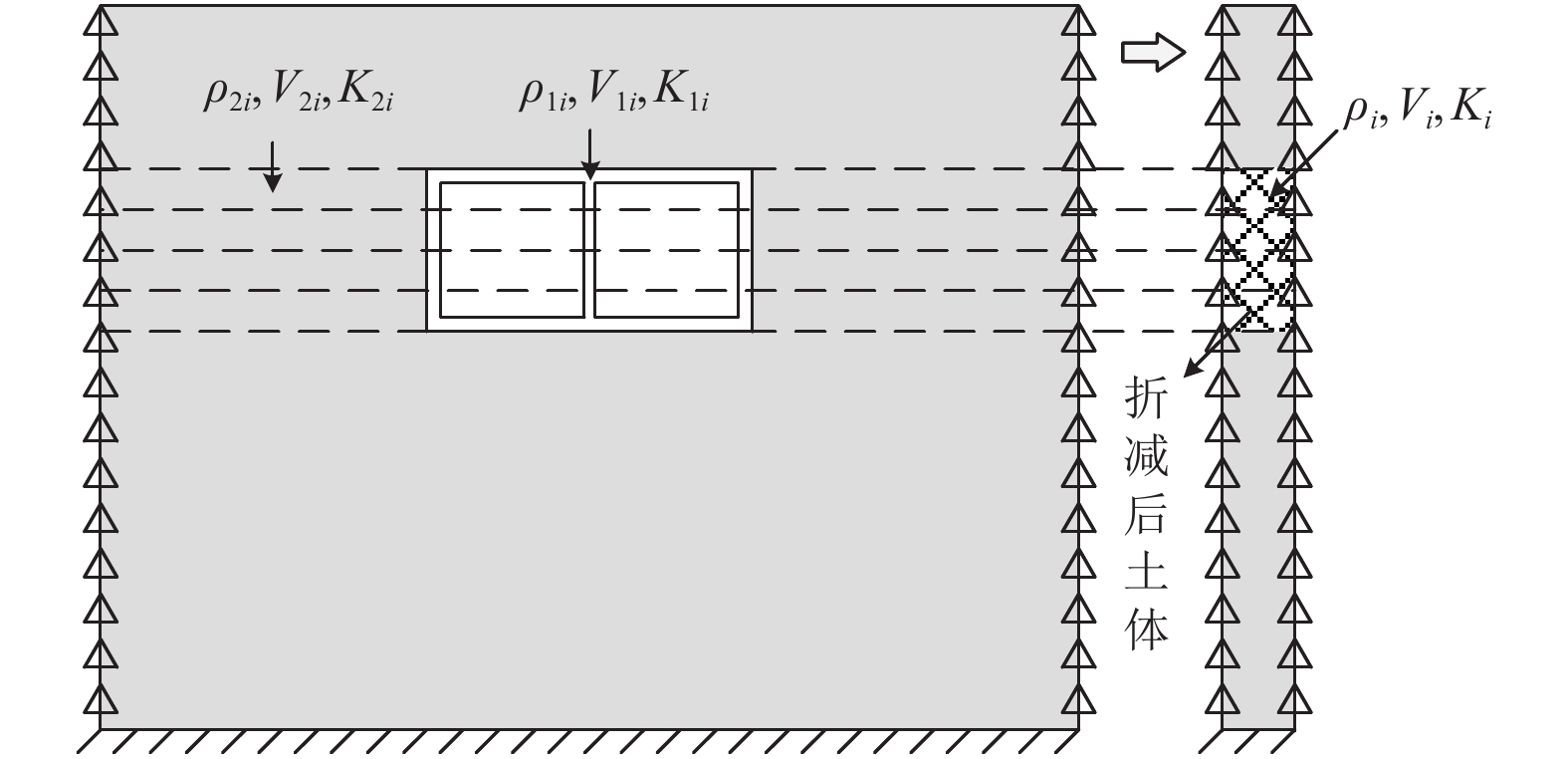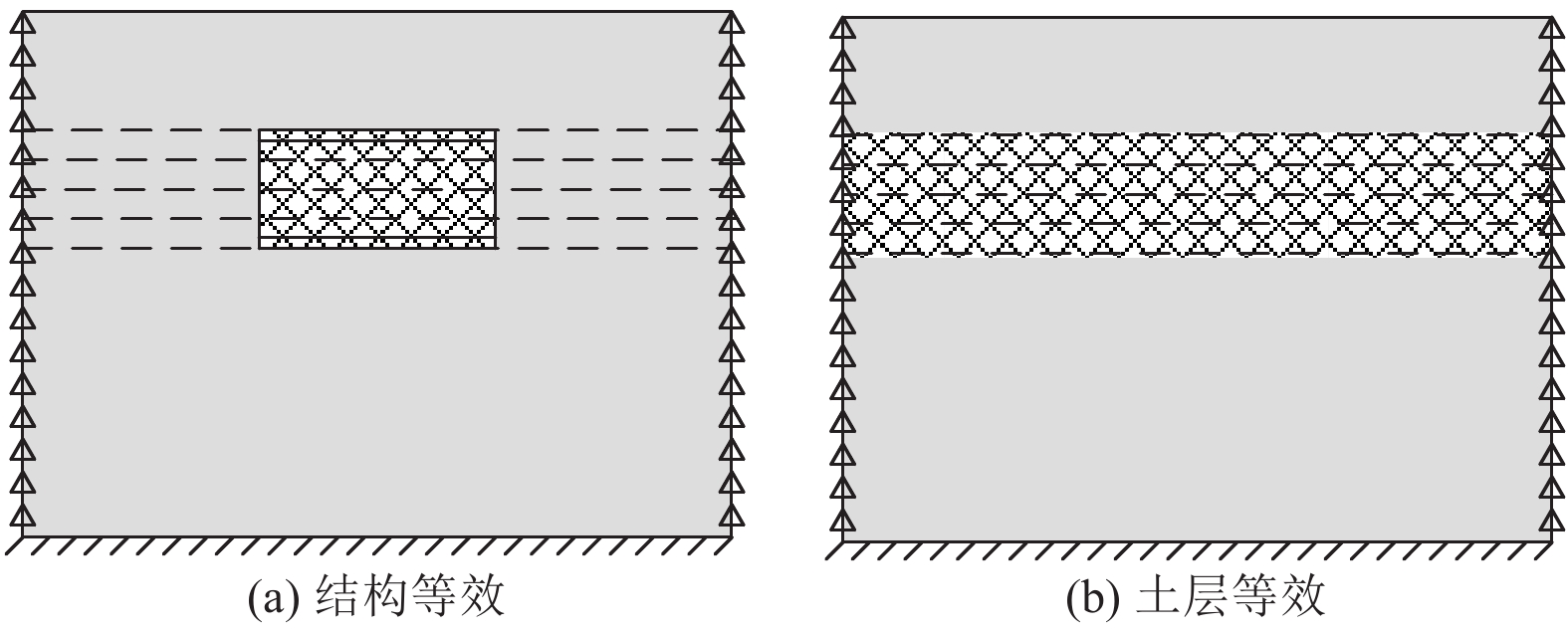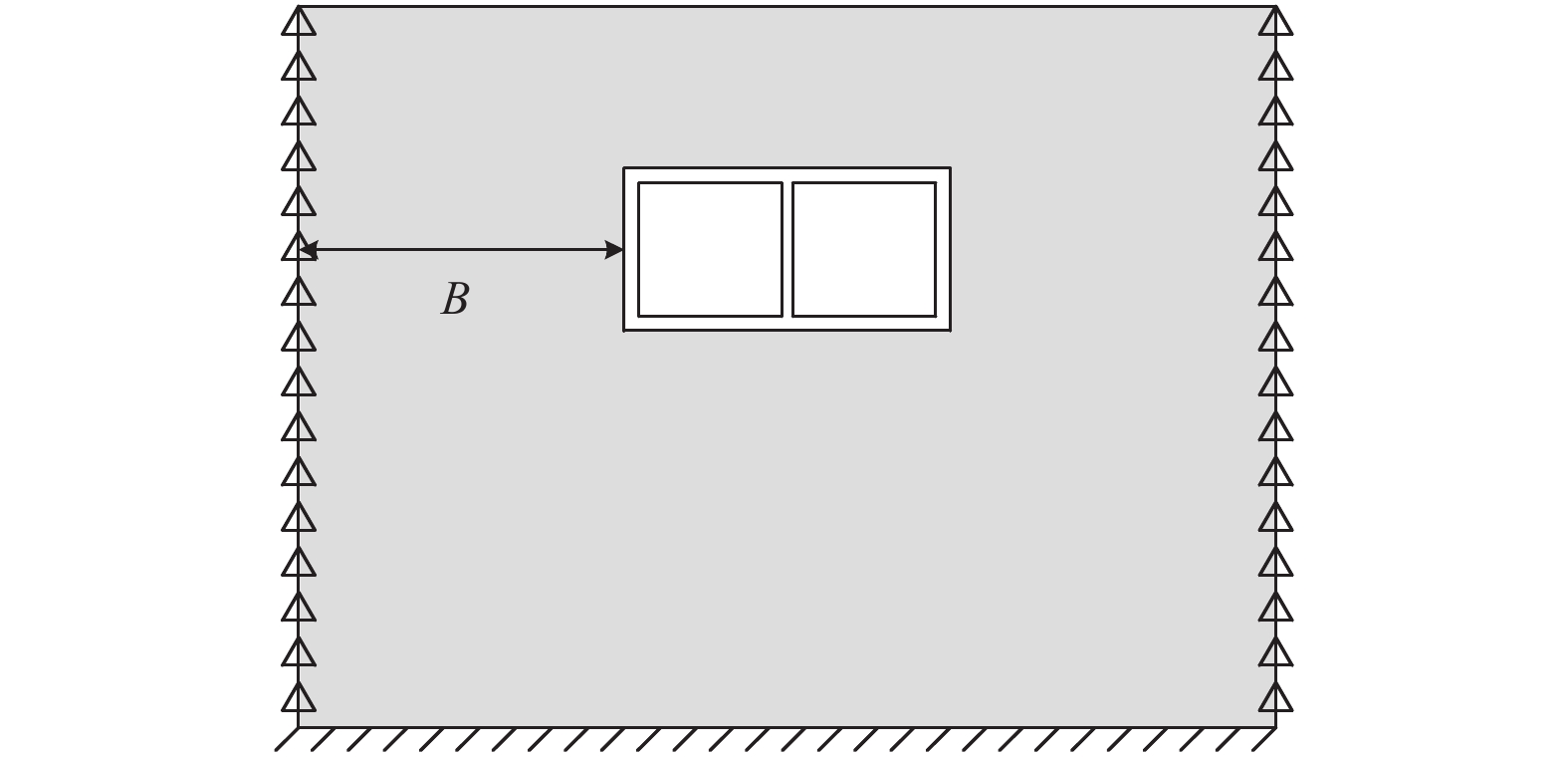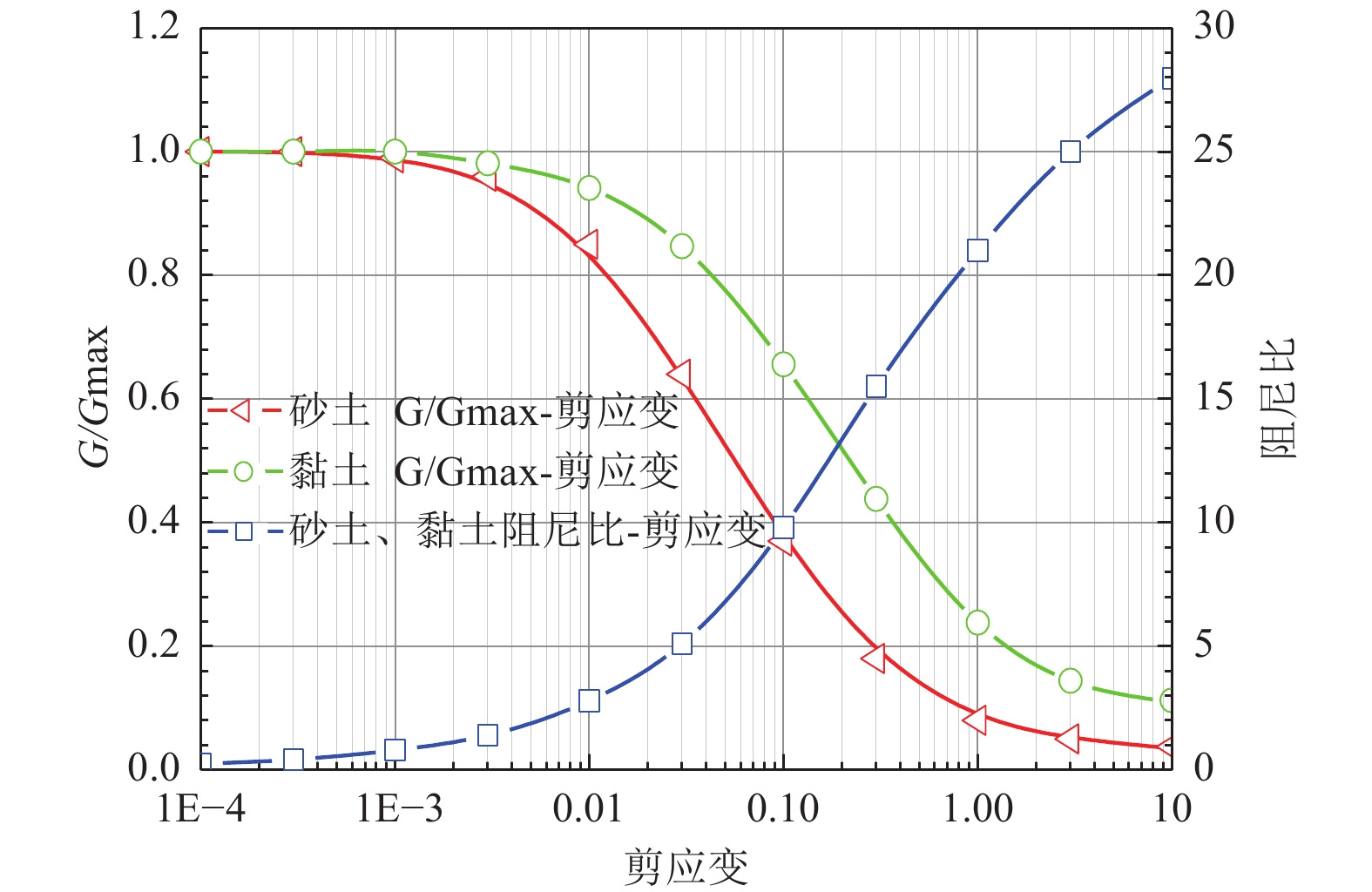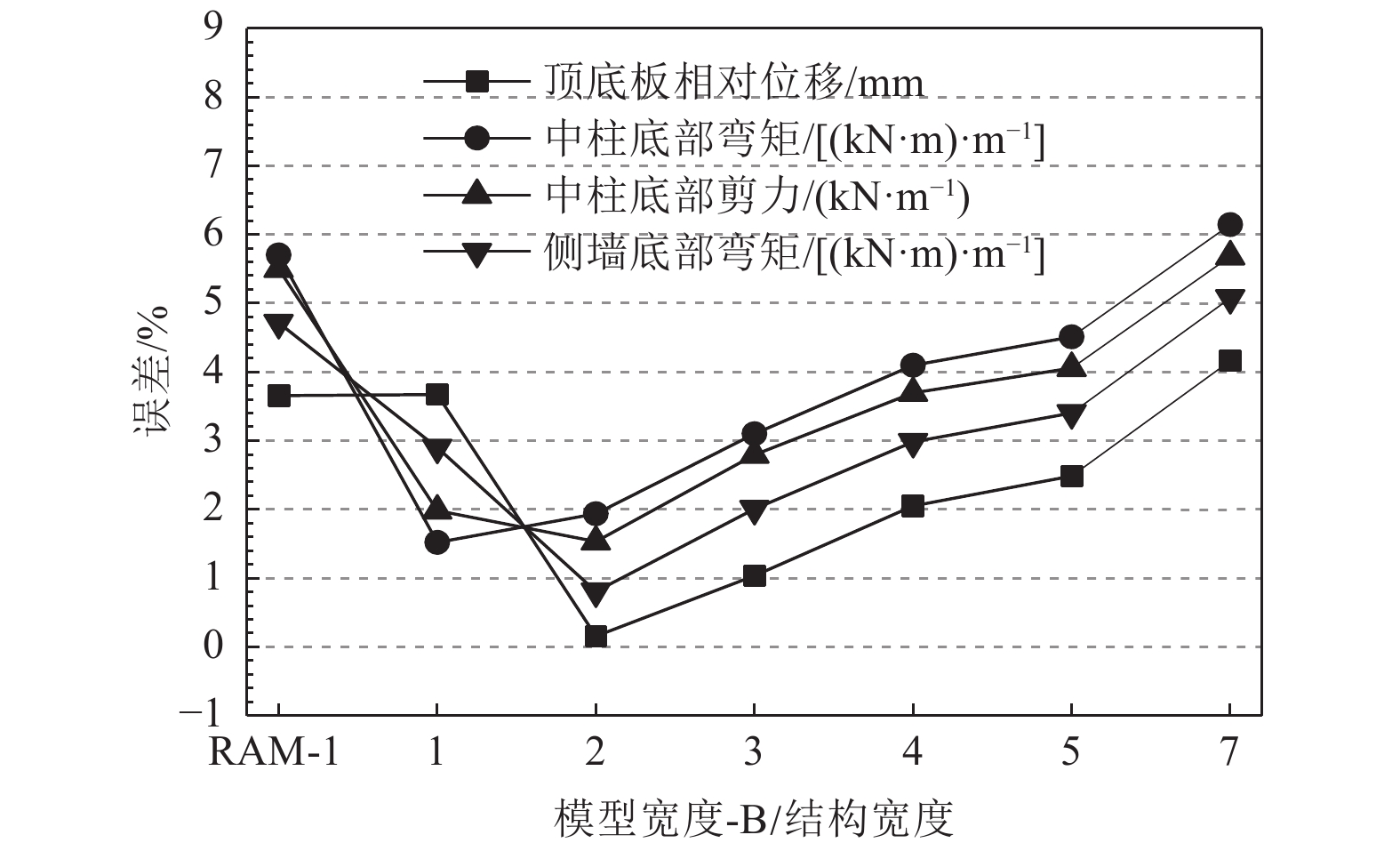An Improved Response Acceleration Method for Seismic Analysis of Underground Structures
-
摘要: 为考虑结构的存在对反应加速度法中地震输入荷载的影响,基于《城市轨道交通结构抗震设计规范》(GB 50909—2014)中的反应加速度法,提出将土-结构模型转换为自由场模型的等效方式进行地震反应分析。采用等效自由场进行地震输入荷载计算,近似地考虑了结构的存在对地震输入荷载的影响,以期提高反应加速度法的计算精度。使用有限元软件ABAQUS,采用改进前后反应加速度法对日本大开车站不同工况下的地震反应进行计算。研究结果表明,采用等效自由场计算的地震输入荷载有效提高了反应加速度法的计算精度。在验证等效方式有效性的基础上,分析等效模型宽度的选取对反应加速度法计算结果的影响,建议等效模型边界至结构侧边的距离取为1~3倍结构宽度。Abstract: In order to consider the influence of structure on the seismic input load in the response acceleration method (RAM), an equivalent method for transforming the soil-structure model into a free-field model is proposed based on the RAM in the Code for Seismic Design of Urban Rail Transit Structures (GB 50909—2014). The seismic input load calculated by the equivalent free-field approximately considers the influence of the structure on the seismic input load, and furtherly improves the calculation process of the RAM. The finite element software ABAQUS is used to calculate the RAM and the improvedRAM under the different working conditions of Daikai Station. The results show that the seismic input load calculated by the equivalent free field method effectively improves the calculation accuracy of the RAM. On the basis of verifying the validity of the equivalent method, the influence of the selection of the equivalent model width on the calculation results of the RAM is discussed. It is suggested that the distance from the boundary of the soil-structure model to the side of the structure is equivalent to 1~3 times the structure width.
-
表 1 土层参数表
Table 1. Physical properties of soils
分层 土质 厚度/m 密度/(t·m−3) 剪切波速/(m·s−1) 泊松比 1 填土 1 1.9 140 0.333 2 砂土 4.1 1.9 140 0.488 3 砂土 3.2 1.9 170 0.493 4 黏土 3.1 1.9 190 0.494 5 黏土 5.8 1.9 240 0.490 6 砂土 22 2.0 330 0.487 表 2 不同地震作用下结构内力与变形
Table 2. Internal force and deformation of structure under different earthquake load
地震动 幅值 计算方法 顶、底板相对位移/mm 中柱底部弯矩/
[(kN·m)·m−1]中柱底部剪力/
(kN·m−1)侧墙底部弯矩/
[(kN·m)·m−1]Kobe 0.1 g 动力时程分析法 5.77 36.12 11.09 358.40 RAM-1 5.56(3.66%) 34.06(5.70%) 10.48(5.50%) 341.50(4.72%) RAM-2 5.71(1.04%) 35.00(3.10%) 10.78(2.80%) 351.20(2.01%) 0.2 g 动力时程分析法 16.93 102.70 30.88 887.30 RAM-1 16.17(4.47%) 99.31(3.30%) 30.80(0.26%) 879.50(0.88%) RAM-2 16.44(2.86%) 102.00(0.68%) 30.51(1.20%) 877.00(1.16%) 0.3 g 动力时程分析法 31.15 187.50 55.97 1476.00 RAM-1 30.30(2.76%) 181.70(3.09%) 54.43(2.75%) 1447.00(1.96%) RAM-2 30.94(0.67%) 185.50(1.07%) 55.44(0.95%) 1474.00(0.14%) EL Centro 0.1 g 动力时程分析法 14.12 86.02 26.09 771.40 RAM-1 13.41(5.02%) 81.68(5.05%) 25.04(4.02%) 741.00(3.94%) RAM-2 13.61(3.62%) 83.07(3.43%) 25.59(1.92%) 755.90(2.01%) 0.2 g 动力时程分析法 26.73 160.40 47.59 1288.00 RAM-1 25.36(5.15%) 151.70(5.42%) 45.47(4.45%) 1241.00(3.65%) RAM-2 26.12(2.30%) 156.30(2.56%) 46.82(1.62%) 1278.00(0.78%) 0.3 g 动力时程分析法 38.75 231.60 68.07 1755.00 RAM-1 35.48(8.44%) 210.60(9.07%) 62.24(8.56%) 1628.00(7.24%) RAM-2 37.51(3.22%) 222.10(4.10%) 65.35(4.00%) 1704.00(2.91%) 表 3 不同模型宽度-B下结构内力与变形
Table 3. Internal force and deformation of structure with different model width
计算方法 模型宽度-B/
结构宽度顶、底板相对
位移/mm中柱底部弯矩/
[(kN·m)·m−1]中柱底部剪力/
(kN·m−1)侧墙底部弯矩/
[(kN·m)·m−1]动力时程分析法 — 5.77 36.12 11.09 358.40 RAM-1 — 5.56(3.66%) 34.06(5.70%) 10.48(5.50%) 341.50(4.72%) RAM-2 1 5.98(3.67%) 36.67(1.52%) 11.31(1.98%) 368.80(2.90%) 2 5.78(0.16%) 35.42(1.94%) 10.92(1.53%) 355.50(0.81%) 3 5.71(1.04%) 35.00(3.10%) 10.78(2.80%) 351.20(2.01%) 4 5.65(2.05%) 34.64(4.10%) 10.68(3.70%) 347.70(2.99%) 5 5.63(2.49%) 34.49(4.51%) 10.64(4.06%) 346.20(3.40%) 7 5.53(4.16%) 33.90(6.15%) 10.46(5.68%) 340.20(5.08%) -
[1] 董正方, 王君杰, 2014. 反应加速度法中地震动参数的修正研究. 现代隧道技术, 51(1): 32—37 doi: 10.3969/j.issn.1009-6582.2014.01.006Dong Z. F. , Wang J. J. , 2014. Research on ground motion parameter correction in the response acceleration method. Modern Tunnelling Technology, 51(1): 32—37. (in Chinese) doi: 10.3969/j.issn.1009-6582.2014.01.006 [2] 杜修力, 马超, 路德春等, 2017. 大开地铁车站地震破坏模拟与机理分析. 土木工程学报, 50(1): 53—62, 69Du X. L. , Ma C. , Lu D. C. , et al. , 2017. Collapse simulation and failure mechanism analysis of the Daikai subway station under seismic loads. China Civil Engineering Journal, 50(1): 53—62, 69. (in Chinese) [3] 杜修力, 许紫刚, 许成顺等, 2018. 浅埋地下结构地震反应分析的惯性力-位移法. 岩土工程学报, 40(4): 583—591 doi: 10.11779/CJGE201804001Du X. L. , Xu Z. G. , Xu C. S. , et al. , 2018. Inertia force-displacement method for seismic analysis of shallow buried underground structures. Chinese Journal of Geotechnical Engineering, 40(4): 583—591. (in Chinese) doi: 10.11779/CJGE201804001 [4] 李新星, 陈鸿, 陈正杰, 2014. 地铁车站结构抗震设计方法的适用性研究. 土木工程学报, 47(S2): 322—327Li X. X. , Chen H. , Chen Z. J. , 2014. Study on applicability of design method for seismic analysis of subway station. China Civil Engineering Journal, 47(S2): 322—327. (in Chinese) [5] 刘晶波, 王文晖, 赵冬冬, 2010a. 地下结构横截面抗震设计分析方法综述. 施工技术, 39(6): 91—95Liu J. B. , Wang W. H. , Zhao D. D. , 2010a. Review of methods for seismic design and analysis of underground structure cross-section. Construction Technology, 39(6): 91—95. (in Chinese) [6] 刘晶波, 刘祥庆, 王宗纲等, 2010b. 土-结构动力相互作用系统离心机振动台模型试验. 土木工程学报, 43(11): 114—121Liu J. B. , Liu X. Q. , Wang Z. G. , et al. , 2010b. Dynamic centrifuge model test of a soil-structure interaction system. China Civil Engineering Journal, 43(11): 114—121. (in Chinese) [7] 刘晶波, 王文晖, 赵冬冬, 2013. 地下结构横截面地震反应拟静力计算方法对比研究. 工程力学, 30(1): 105—111 doi: 10.6052/j.issn.1000-4750.2011.05.0316Liu J. B. , Wang W. H. , Zhao D. D. , 2013. Comparison of the pseudo-static methods for seismic analysis of the underground structures. Engineering Mechanics, 30(1): 105—111. (in Chinese) doi: 10.6052/j.issn.1000-4750.2011.05.0316 [8] 刘如山, 胡少卿, 石宏彬, 2007. 地下结构抗震计算中拟静力法的地震荷载施加方法研究. 岩土工程学报, 29(2): 237—242 doi: 10.3321/j.issn:1000-4548.2007.02.014Liu R. S. , Hu S. Q. , Shi H. B. , 2007. Study on seismic loading of pseudo-static approach used in the seismic design of underground structure. Chinese Journal of Geotechnical Engineering, 29(2): 237—242. (in Chinese) doi: 10.3321/j.issn:1000-4548.2007.02.014 [9] 矢的照夫, 梅原 俊夫, 青木一二三等, 1996. 兵庫県南部地震による神戸高速鉄道・大開駅の被害とその要因分析. 土木学会論文集, 1996(537): 303–320.Yamato T., Umehara T., Aoki H., et al., 1996. Damage to Daikai subway station of Kobe rapid transit system and estimation of its reason during the 1995 Hyogoken-Nanbu earthquake. Doboku Gakkai Ronbunshu, 1996(537): 303—320. (in Japanese) [10] 许成顺, 许紫刚, 杜修力等, 2017. 地下结构抗震简化分析方法比较研究. 地震工程与工程振动, 37(2): 65—80Xu C. S. , Xu Z. G. , Du X. L. , et al. , 2017. Comparative study of simplified methods for seismic analysis of underground structure. Earthquake Engineering and Engineering Dynamics, 37(2): 65—80. (in Chinese) [11] 徐琨鹏, 景立平, 宾佳, 2019. 四种地下结构抗震设计简化分析方法对比. 震灾防御技术, 14(2): 281—292 doi: 10.11899/zzfy20190203Xu K. P. , Jing L. P. , Bin J. , 2019. Comparison of four simplified analytical methods for seismic design of underground structures. Technology for Earthquake Disaster Prevention, 14(2): 281—292. (in Chinese) doi: 10.11899/zzfy20190203 [12] 禹海涛, 张正伟, 李攀, 2020. 地下结构抗震设计的改进等效反应加速度法. 岩土力学, 41(7): 2401—2410Yu H. T. , Zhang Z. W. , Li P. , 2020. Improved equivalent response acceleration method for seismic design of underground structures. Rock and Soil Mechanics, 41(7): 2401—2410. (in Chinese) [13] 中华人民共和国住房和城乡建设部, 2014. GB 50909—2014 城市轨道交通结构抗震设计规范. 北京: 中国标准出版社.Ministry of Housing and Urban-Rural Development of the People’s Republic of China, 2014. GB 50909—2014 Code for seismic design of urban rail transit structures. Beijing: Standards Press of China. (in Chinese) [14] 中华人民共和国住房和城乡建设部, 2018. GB/T 51336—2018 地下结构抗震设计标准. 北京: 中国建筑工业出版社.Ministry of Housing and Urban-Rural Development of the People’s Republic of China, 2018. GB/T 51336—2018 Code for seismic design of urban underground structures. Beijing: China Architecture & Building Press. (in Chinese) [15] Liu J. B. , Zhang X. B. , 2018. Practical seismic analysis of large underground structures: theory and application. Science China Technological Sciences, 61(9): 1417—1425. doi: 10.1007/s11431-018-9243-5 -



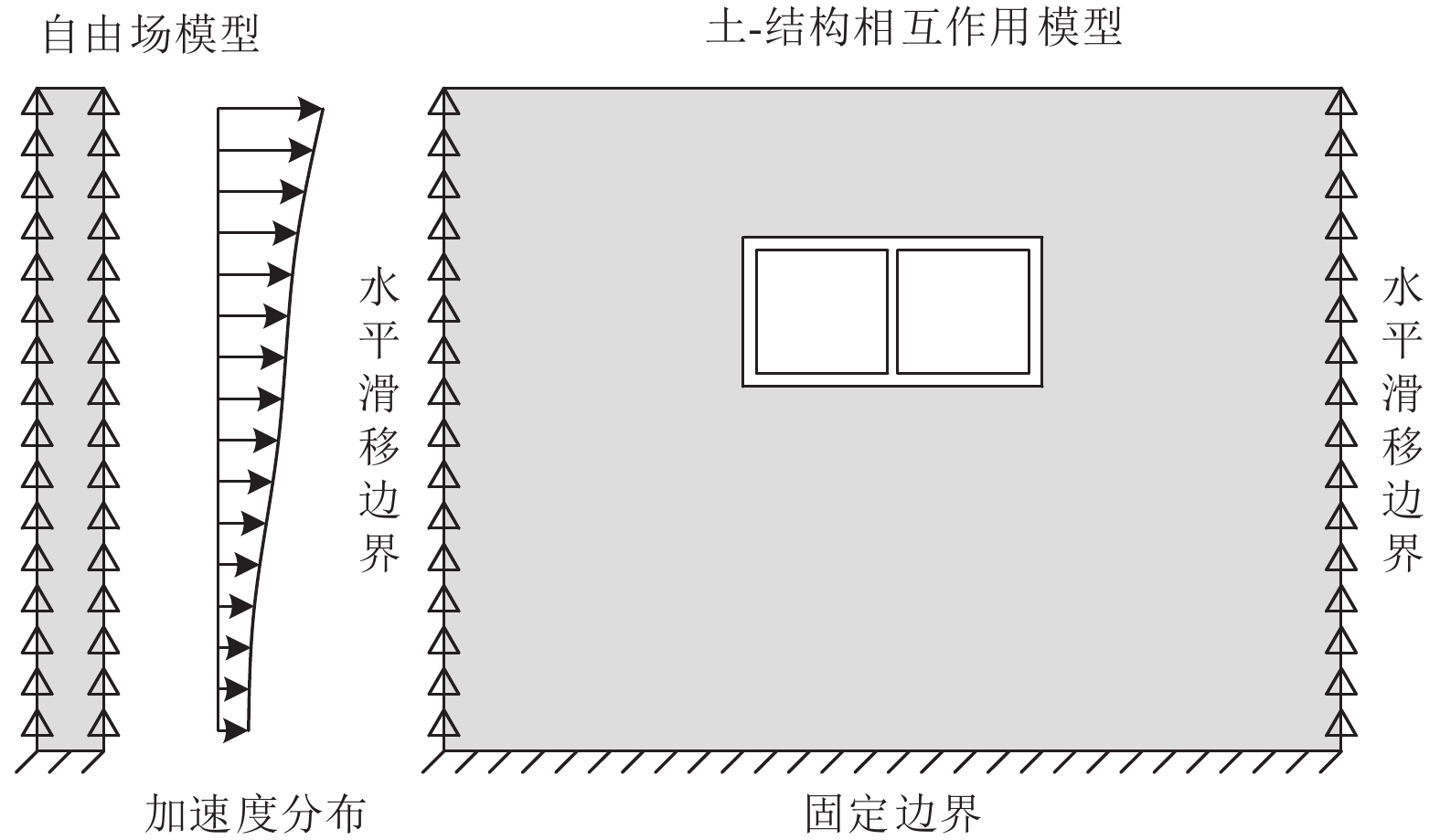
 下载:
下载:
